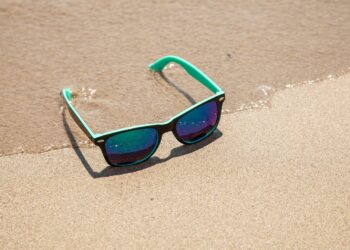
Excessive exposure to blue light emitted by consumer electronics and energy-efficient lightbulbs has been previously linked to a host of health problems, especially for the eyes. Scrolling and swiping on your phone or watching TV for hours can cause blurry vision, eyestrain, dry eyes, and even cataracts. When exposed to blue light before bedtime, people can have trouble sleeping well.
Now, a new study has revealed another concerning side effect of excessive blue light exposure: accelerated aging.
The darkside of blue light
“Excessive exposure to blue light from everyday devices, such as TVs, laptops and phones, may have detrimental effects on a wide range of cells in our body, from skin and fat cells, to sensory neurons,“ said Dr. Jadwiga Giebultowicz, a professor at the Department of Integrative Biology at Oregon State University and senior author of the new study. “We are the first to show that the levels of specific metabolites – chemicals that are essential for cells to function correctly – are altered in fruit flies exposed to blue light.“
“Our study suggests that avoidance of excessive blue light exposure may be a good anti-aging strategy,“ said Giebultowicz.
The researchers at Oregon State University studied the effect of blue light exposure on the cells of fruit flies. In a previous in vivo study, the researchers showed that fruit flies exposed to blue light switched on stress-protective genes, indicating that blue light was hurting them in some way. Fruit flies that were kept in the dark lived significantly longer than their counterparts exposed to blue light.
This time, the researchers homed in on a specific class of metabolites — chemical products of metabolic reactions catalyzed by various enzymes that naturally occur within cells — that are believed to be essential for the functioning of cells. These include succinate, an essential metabolite generated by mitochondria with a role in turning food into fuel for cells, as well as glutamate, a central metabolite in all organisms since it provides the link between carbon and nitrogen metabolism.
When the researchers compared fruit fly cells exposed to blue light for two weeks to those kept in the dark, they found succinate levels increased while glutamate levels decreased.
“High levels of succinate after exposure to blue light can be compared to gas being in the pump but not getting into the car,“ said Giebultowicz. “Another troubling discovery was that molecules responsible for communication between neurons, such as glutamate, are at the lower level after blue light exposure.“
These biochemical changes suggest that cells exposed to blue light risk malfunctioning, thereby causing premature death. This would explain previous findings that showed blue light accelerates aging and premature death in live fruit flies. And because these metabolites virtually have the same role in human cells, there are good reasons to believe excessive blue light exposure might accelerate aging in humans as well.
As a caveat, the researchers used fairly strong blue light in their experiments, whereas the kind of blue light emitted by devices that humans are regularly exposed to is significantly weaker. This is why the authors of the new study call for more research that involves human cells to make a better risk assessment.
Blue light from the LEDs used in smartphones, TVs, and tablets has wavelengths between 400 and 490 nanometers. Blue light may damage retinas, depending on the wavelength and exposure time. A filter that cuts up to 95% of blue light can lessen this damage. And while nighttime exposure to blue light has been linked with trouble sleeping and depressive symptoms, a brief stint of blue light exposure in the morning may have the opposite effect. One study found that 20 minutes of blue light exposure can ease symptoms of seasonal affective disorder, or SAD, a form of depression that occurs during the changing of the seasons.
“LEDs have become the main illumination in display screens such as phones, desktops, and TVs, as well as ambient lighting, so humans in advanced societies are exposed to blue light through LED lighting during most of their waking hours. The signaling chemicals in the cells of flies and humans are the same, so there is potential for negative effects of blue light on humans,“ said Giebultowicz.
The findings appeared in the journal Frontiers in Aging.




